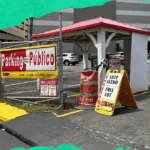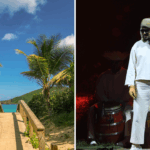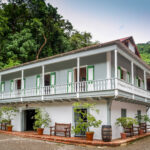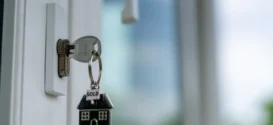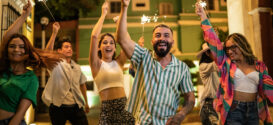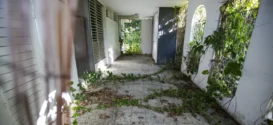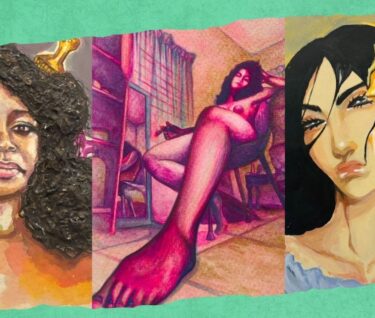
An art exhibition featuring 200 Puerto Rican women challenges gender disparities
The collection of art by Puerto Rican women showcased for over a month in Chicago, and will be presented at La Liga de Arte, in San Juan, this June.
On February, 14th 2025, one hundred and fifty art pieces created by Puerto Rican women traveled in a carry-on suitcase from Luis Muñoz Marín International Airport to Humboldt Park, Chicago, the city’s oldest Puerto Rican neighborhood.
Days earlier, Alexis Figueroa—a Puerto Rico–born art collector and cultural advocate based in Chicago—waited patiently for 12 hours at a friend’s business in San Juan, as an intergenerational and interdisciplinary pool of artists arrived to entrust him with their work.
Where were they headed? The exhibition Puerto Rican Women in the Arts opened on March 7th, 2025 at El Schomburg Gallery, a community space located in Humboldt Park. It featured the work of close to 200 living women artists based in Puerto Rico and the diaspora. A day later, on International Women’s Day, organizers hosted an artist talk that included Krystal M. Romero Granell, known for stained glass, engraving, and occasional mural work in Puerto Rico.
I was able to connect with other artists and learn about their work. [Chicago] welcomed me as if they’d known me all of my life–with open arms. That’s what it was all about, continuing to work and collaborate and creating a strong network of artists… I truly believe in collective work [&] see a value in these spaces
– Krystal M. Romero Granell
Also present at the opening were painter Beatriz Echeverría; sculptor and visual artist Ada del Pilar Ortiz; movement and visual artist Nicole Soto Rodríguez; multi-dimensional artist Lau Claudio, and photographer Isa Xavitri.
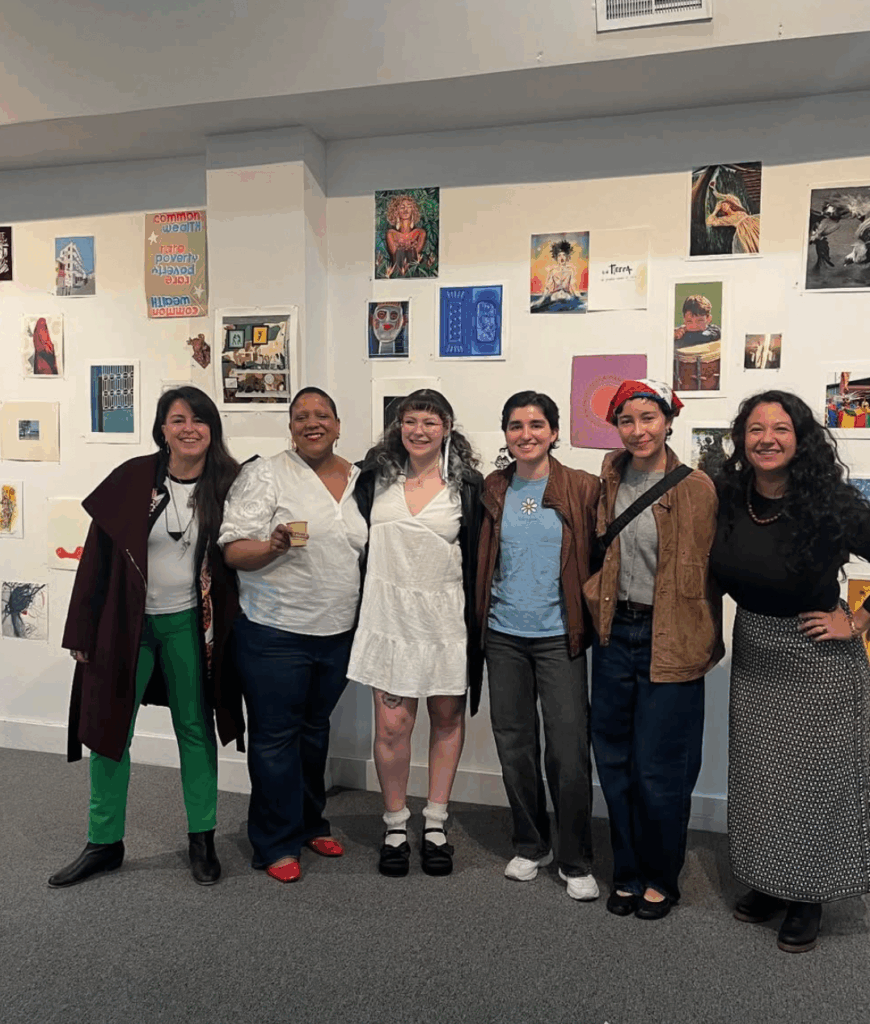
The collection itself presents a diverse mix of artistic mediums, stylistic techniques, and narrative viewpoints.
This includes photography, paintings in watercolor, oil, and acrylic, some printmaking, and a small ceramic sculpture—each exploring themes such as body image, sexuality, identity, nature, politics, culture, and many more.
- In addition to the pieces that Figueroa brought in his suitcase, others sent their artworks via postal service from places as remote as Holland, France and Mexico; some artists even went to Chicago—because they lived there or nearby—to deliver them in person.
While approximately 200 arrived by the deadline, the call for submissions yielded an archive of over 480 women—a list that continues to grow.
- This ambitious endeavor includes prominent artists like Isabel Bernal, Susana Herrero-Kunhart, Dafne Elvira, Edra Soto, Ada Rosa Rivera, Poli Marichal, Nitzayra Leonor and Analinda Burgos, to name a few, while fewer than a handful were exhibiting their work for the first time.
After being showcased in Chicago for over a month, the collection organized by Figueroa is making its way to La Liga de Arte at Old San Juan, Puerto Rico with a scheduled opening on June 5th. The exhibition will be open to the public until July 11.
🖼️ The exhibit’s origin
Motivated by a conversation with writer and longtime friend Anjanette Delgado regarding limited opportunities for women to exhibit, promote, and sell their work in galleries and museums, Figueroa began researching the topic. This ultimately led him to create an archive of contemporary women artists, the ones he would later invite to participate in this exhibit.
Puerto Rico is no stranger to patriarchal structures that inherently diminish women’s contribution to the political, social and cultural landscapes of their time. In the arts, specifically, research shows that “despite some evidence that galleries with higher numbers of women artists perform better overall, women still account for only 40% of artists represented by galleries”.
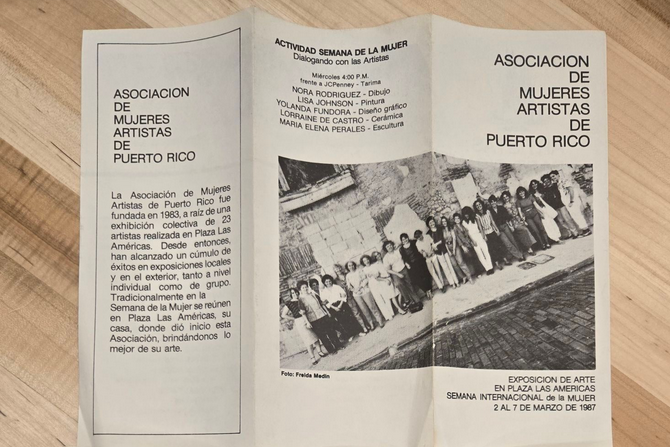
Their inaugural exhibition was held at the Plaza las Américas shopping center in Hato Rey, Puerto Rico in 1983. Later, they secured partnerships to exhibit both in Puerto Rico and in places like New York, Santo Domingo and Washington D.C., until 1993 when they ceased operations.
Figueroa also credits past and present curators for inspiring his research. One colleague whose work stood out was artist and critic Raquel Torres Arzola, who in 2019 presented Anarchy and Dialectic in Desire: Gender and Marginalization in Puerto Rico at Puerto Rico’s Museum of Contemporary Art. The installation spotlighted identities marginalized in the art scene due to gender, race, or social class throughout the 20th and 21st centuries.
In an interview for this article, Torres Arzola highlighted how disproportionate expectations and discourse fosters gender inequalities within cultural spaces:
Institutions always have a reason for not including women… almost always accusing them of lacking quality in their work. However, in art, one of the things that is considered necessary is experimentation, both technically and conceptually. This is rejected when it comes from women. That’s part of what discrimination entails
– Raquel Torres Arzola
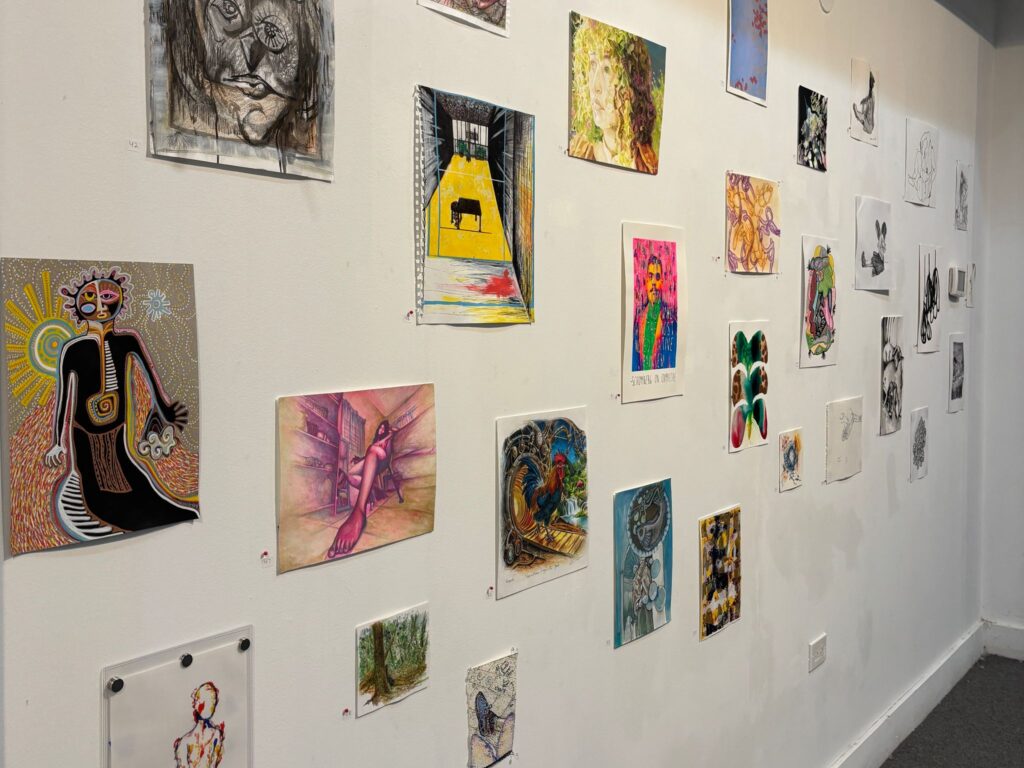
For Figueroa, this need for experimentation reigns true and is the reason why the criteria in his call for submissions was simple: to send something the artist was proud to showcase, a piece that represented their craft.
- The artists were also asked to price their piece at no more than $150 to keep it accessible.The only requirement was to bring something small enough to travel well in a suitcase from San Juan to Chicago.
🎨 Connecting through the arts
Figueroa moved to the Windy City 11 years ago and immersed himself in the arts community. There, he met fellow Puerto Rican artist and educator Brenda Torres-Figueroa, who in 2023 transformed a vacant space in Humboldt Park into El Schomburg Gallery—now a thriving hub for creativity serving the local neighborhood.
As a Puerto Rican woman artist, to host some of my colleagues’ work —some of which I haven’t seen in over 25 years—is important to me. [This exhibition] helps us reflect on our relationship with Puerto Rico here in the diaspora.
– Alexis Figueroa
Figueroa and Torres-Figueroa are part of a “Chicagorican” creative network. Echoing Torres-Figueroa, he emphasizes how these works bridge dialogues between Puerto Ricans across the island and diaspora, noting,
- “There is a group of artists who moved here or are descendants of Puerto Ricans who represent art here – maybe 20, at most. They’ve lost a bit of connection, a bit of relevance with the island.” Because of this, these experiences are welcomed and celebrated in communities like Humboldt Park.
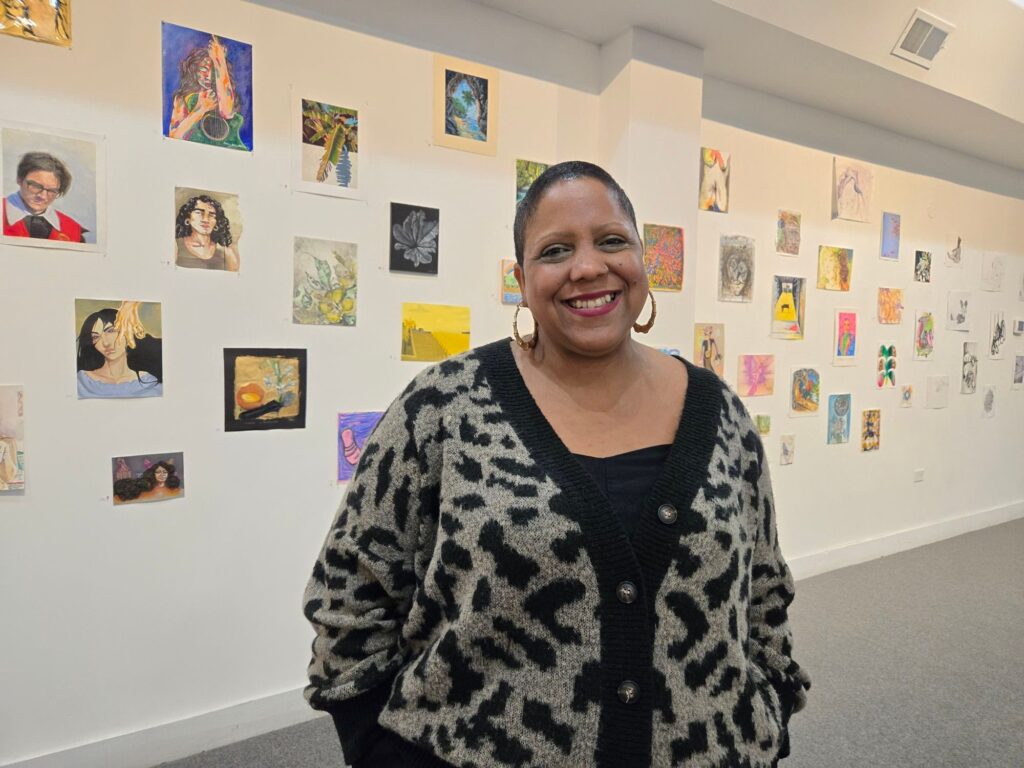
And its success was clear: in just six weeks, over 2,000 people visited the exhibit at El Schomburg—including out-of-state Puerto Ricans, university students, and artists. Furthermore, of the 200 on display, 120 pieces were sold.
Documenting history
Somehow, history repeats itself. In a full circle moment, the next stop for this historic exhibit is La Liga de Arte, in Old San Juan, the place where the Women Artists Association was established in 1983.
The initiative to bring together so many women artists from Puerto Rico and the diaspora is significant. Featuring both established and emerging artists enriches the exhibition and generates intergenerational dialogue”.
– Mariluz Carrasquillo, Director of La Liga de Artes.
- Despite limited resources, this marks the first recorded instance of so many women artists exhibiting together under one roof. While there was no initial intention to bring the collection to San Juan, following a call with a friend, also a board member of La Liga, Figueroa was compelled to bring it “home”.“Esto es para ellas (This is for them),” he said.
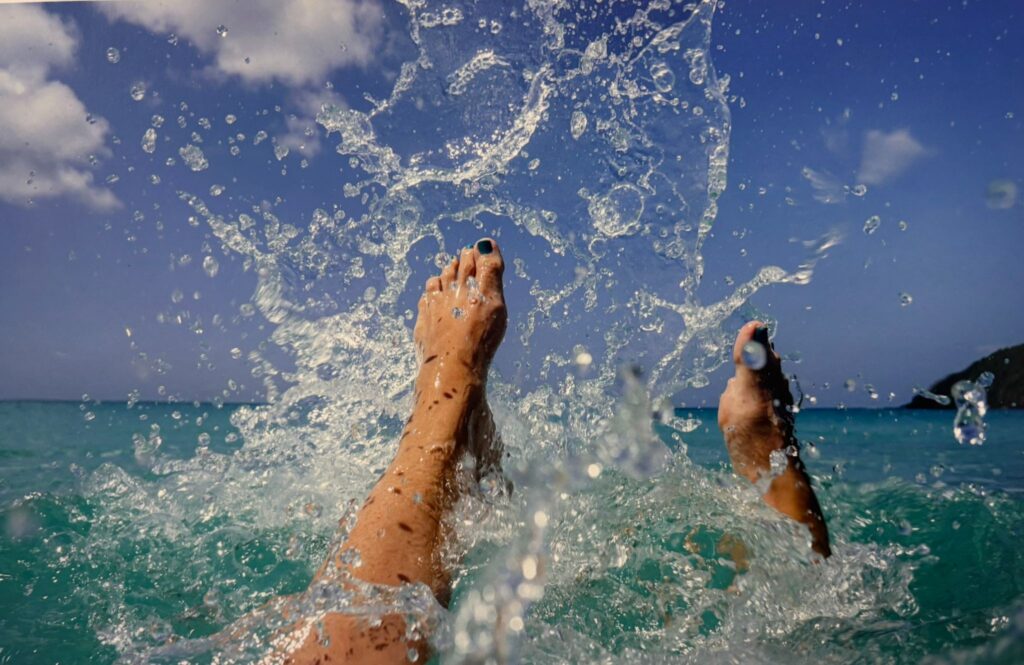
But the next big undertaking is documenting the exhaustive list of close to 500 women and distributing it to cultural institutions, art schools and community archives that want to preserve and help evolve it.
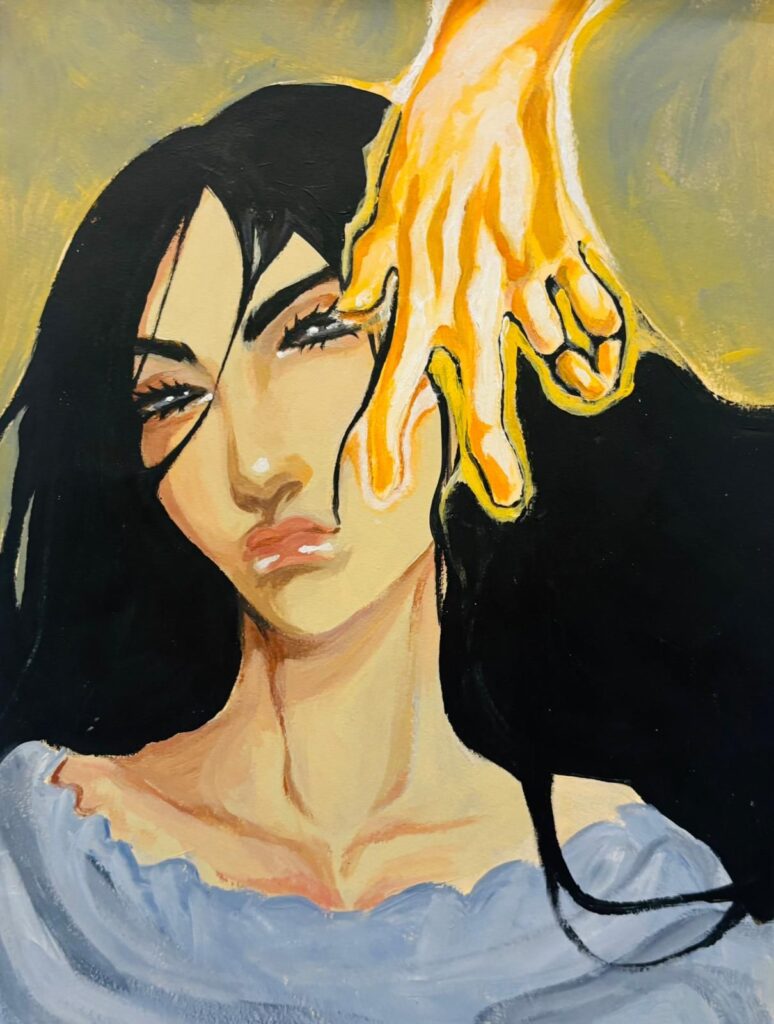
“I’m sure there have been a ton of additional exhibitions of women, but there’s no catalog, so it’s like they never happened. Everything has to be documented, which is one of the reasons I’m making the catalog; it’s the only reason.”
At the moment, Figueroa is working to produce a catalog of participating and non participating artists thanks to a contribution by the Puerto Rican Cultural Center in Chicago–an important organization in Humboldt Park that has serviced the Puerto Rican community for over 50 years.
This 32 page booklet will include the names, contact information and a photo of the piece showcased in addition to a list of the artists that could not submit in time.
In the coming months, 600 physical copies will be printed and sold to benefit these efforts. Copies may be ordered from Trailer Park Project, via their Instagram account @Trailerparkproj.
